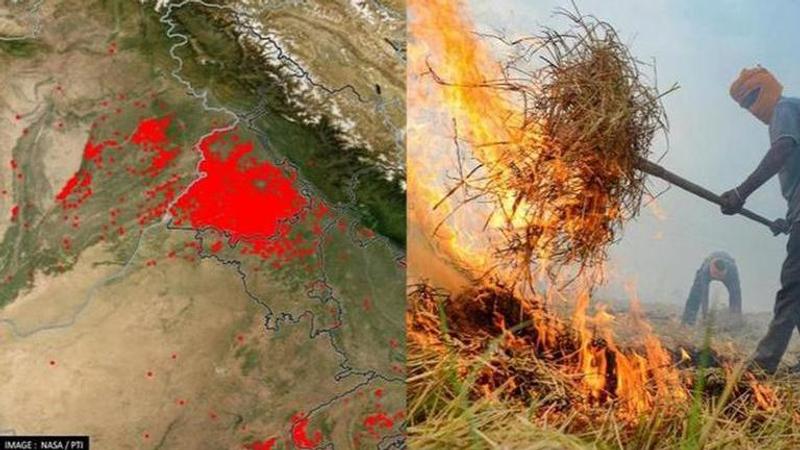Published 15:33 IST, November 2nd 2022
NASA satellites present grave picture of stubble burning incidents across Punjab
NASA's satellites presented a map showcasing incidents of stubble burning in Punjab that significantly contributed to worsened air quality in north India.

The air pollution due to stubble burning in Punjab has been on the rise, so much so that the effects are visible from space. US space agency NASA's satellites have mapped the fire incidents in Punjab, which explains how stubble burning has had its major share in the air pollution in north India. Stubble burning is carried out by farmers to get rid of the excess paddy after the rice harvest.
(Map showing fire incidents across Punjab; Image: NASA)
The picture above has been created using observational data as of November 1. Experts say that the rise in farm fires in Punjab has resulted in worse air quality in Delhi, where the share of stubble burning in the PM2.5 pollution jumped 26 per cent, the highest this year. As of October 30, the AQI in the national capital was around 400 ('severe' category), however, little improvement was noticed later.
As for Punjab, Tarn Taran, Amritsar and Gurdaspur accounted for 60 per cent of the stubble-burning incidents out of nearly 3,700 reported between September 15 and October 22. The Ludhiana-based Punjab Remote Sensing Centre revealed that Tarn Taran reported 1,034 stubble burning incidents, the maximum in the state, followed by Amritsar (895) and Gurdaspur (324). Last week, the Commission for Air Quality Management said the increased incidents of stubble burning in Punjab this year "is a matter of serious concern".
Other districts where stubble burning incidents were reported are Patiala (246), Kapurthala (214), Ferozepur (187), Jalandhar (169) and Ludhiana (131).
Notably, this is not the first time the fire incidents, and the resulting pollution was spotted by NASA satellites. Last year in November, the agency shared pictures of thick smoke plumes around the national capital due to heightened fire activity in northern India.
(Map of fire activity in northern India from November 2021; Image: NASA)
“Looking at the size of the plume on November 11 and the population density in this area, I would say that a conservative estimate is that at least 22 million people were affected by smoke on this one day,” said Pawan Gupta, a scientist at NASA’s Marshall Space Flight Center said in an official report at the time. Similar images emerged back in 2015, showcasing the ill effects of stubble burning.
Updated 15:32 IST, November 2nd 2022






